
| (one synonym : Hypochroma aurantiacea T.P. Lucas, 1891) GEOMETRINAE, GEOMETRIDAE, GEOMETROIDEA | (donherbisonevans@yahoo.com) and Stella Crossley |
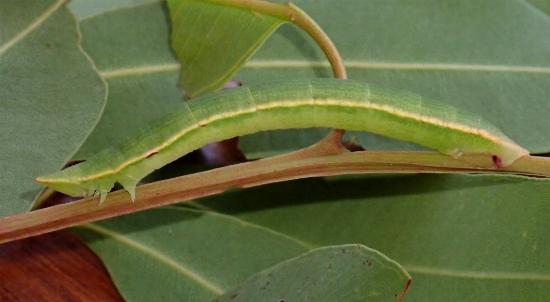
(Photo: courtesy of Dick Whitford, Julatten, Queensland)

| (one synonym : Hypochroma aurantiacea T.P. Lucas, 1891) GEOMETRINAE, GEOMETRIDAE, GEOMETROIDEA | (donherbisonevans@yahoo.com) and Stella Crossley |

(Photo: courtesy of Dick Whitford, Julatten, Queensland)
The caterpillars of this species are thin green loopers with pointed ends, although the head actually has two red-tipped horns held close together,
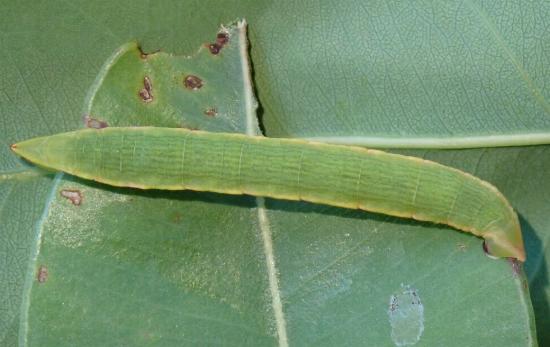
The caterpillars feed on the foliage of
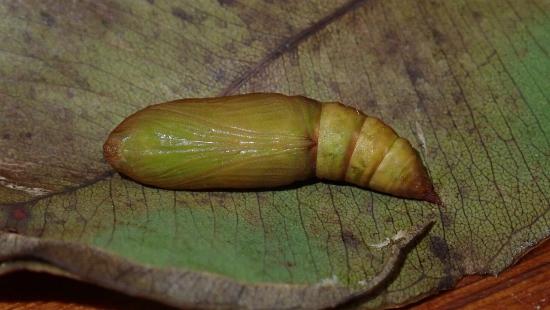
The caterpillars grow to a length of about 4.5 cms.
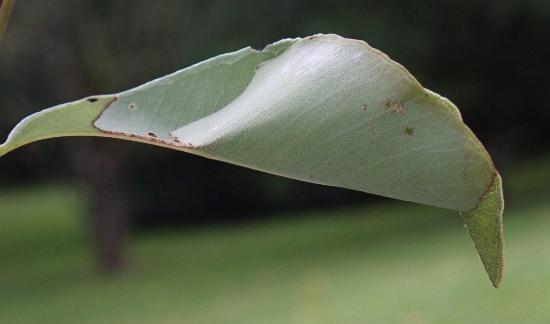
The caterpillars pupate in a tightly folded leaf.
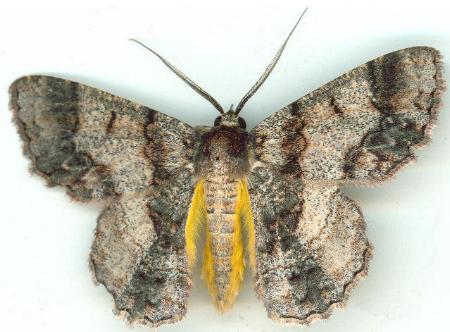
The adult moths are variable: usually an earthy grey with patterned bands of darker grey across the wings.
The undersides are bright yellow with broad brown margins, white patches, and a dark spot near the middle of each wing. The wingspan is about 4 cms.
The species is found in
as well as in Australia in:
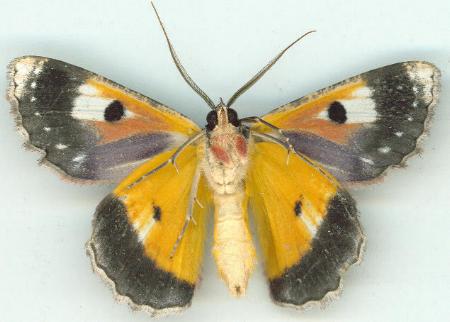
Further reading :
Ian F.B. Common,
Moths of Australia,
Melbourne University Press, 1990, fig 37.10, p. 372.
Achille Guenée,
Uranides et Phalénites,
in Boisduval & Guenée:
Histoire Naturelle des Insectes; Spécies Général des Lépidoptères,
Volume 9, Part 9 (1857), p. 280, No. 447.
 caterpillar |  butterflies |  Lepidoptera |  moths |  caterpillar |
(updated 20 July 2010, 16 July 2020)